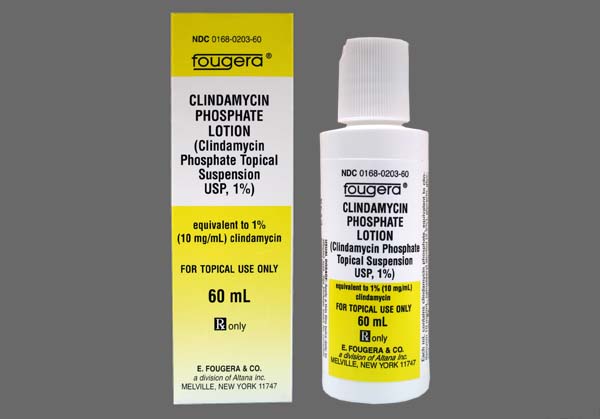Clindamycin: Uses & Side Effects

Clindamycin is a prescription antibiotic. It is used to treat a wide variety of bacterial infections in the lungs, skin, blood and internal organs. It cannot treat viral infections such as colds or flu.
It is most commonly used for skin infections, said Dr. Stephen Neabore, a primary care doctor at the Barnard Medical Center in Washington, D.C.
Clindamycin can be taken by mouth as a capsule or as a liquid; by injection; topically on the skin as a cream, gel, or foam; or vaginally as a cream or suppository, said Ken Sternfeld, a New York-based pharmacist.
"Clindamycin is a broad spectrum antibiotic that addresses a number of ailments. It's also a premedication for other treatments that are known to cause diseases," said Sternfeld. "It's prophylactic antibiotic therapy that you take before you go for another treatment."
Sometimes it can be an alternative to medicines to which patients are allergic. "If you're allergic to penicillin you might not be allergic to clindamycin and vice versa," said Sternfeld.
Common brands of clindamycin for vaginal use are Clindesse, which is a one-dose cream, and Cleocin, a suppository.
Clindamycin for vaginal infection
Clindamycin can be used to treat vaginal bacterial infections. Though on its own it is not effective at treating yeast infections, a 2015 study in BMV Infectious Diseases suggested that, combined with probiotics administered vaginally, it could be helpful. Women with bacterial vaginosis and yeast infections were given courses of oral clindamycin, vaginal metronidazole gel and vaginally administered probiotics. Their partners were also given a course in clindamycin. "The cure rate was 74.6 percent after 6 months, 65.1 percent after 12 months and 55.6 percent after 24 months," according to the study.
Get the world’s most fascinating discoveries delivered straight to your inbox.
In addition to the oral route, clindamycin can be prescribed as a cream that is applied inside the vagina or it can come as a suppository to be placed inside the vagina. If it is a cream, it should not be used on any other parts of the body. The National Institutes of Health stresses that patients must finish the prescription of clindamycin, even if symptoms cease. Otherwise, the infection may not be completely treated and may become unable to be treated with antibiotics.
As a vaginal suppository, clindamycin is usually taken once a day for three days. As a cream, it is usually applied once a day for three or seven days. Doses should be taken at the same time every day.
In addition to the regular side effects of clindamycin, those taking it for vaginal infection may experience thick, white vaginal discharge and vaginal burning, itching, swelling or pain.
Clindamycin for acne
According to the NIH, clindamycin, when prescribed for acne, may be taken orally or applied topically as a cream, phosphate gel, lotion, pad or foam. Clindamycin cannot cure acne, but it may help keep it under control. For this reason, it is important for patients to continue to take clindamycin even if their acne appears to improve, and to take it for as long as directed.
Before using clindamycin for acne, patients must thoroughly wash the infected areas with soap and pat dry. Wait 30 minutes after shaving to apply topical clindamycin. The medicine should be applied to the whole area that is infected with acne, not to individual pimples. While using clindamycin, patients should not wash their faces or other infected areas more than two or three times per day.
Those using a foam form of clindamycin should be careful not to get it near lips, eyes or nose because it contains a stinging alcohol. The foam is also flammable, so caution should be taken.
In addition to other side effects, those taking clindamycin for acne may experience dry, peeling, itching, burning, red, or oily skin. They may also experience new pimples or blemishes.
Clindamycin for toxoplasmosis
Toxoplasmosis, an infection caused by the parasite Toxoplasma gondii, is sometimes treated by clindamycin if the patient cannot take sulfadizine or other sulfa medications. In this case, clindamycin is taken orally for three to six weeks, depending on the prescription.
A form of clindamycin is often prescribed for cats or dogs who get toxoplasmosis.
Clindamycin and staphylococcal infections
Clindamycin has long been a popular treatment for staph infections, but a recent study conducted by JMI Laboratories and written about by the American Society for Microbiology has shown that Staphylococcus aureus is becoming increasingly resistant to it and other drugs. "If the bacteria is resistant, the antibiotic won't work or it doesn't work well," said Neabore. "So if you prescribe it and it doesn't do anything, it's either the wrong diagnosis or there's a resistance. If nothing happens, go see your doctor. We like to take culture samples and you can test it to see which antibiotics will work or not work."
Side effects and warnings
"Clindamycin can cause some stomach distress, as most antibiotics do," said Sternfeld. Other less serious side effects include:
- joint pain
- pain when swallowing
- heartburn
- white patches in the mouth
- head or backaches
Other, more serious side effects should be treated by a doctor immediately, including:
- blisters
- rash
- hives
- difficulty breathing or swallowing
- yellowing of the skin or eyes
- decreased urination
- fever, chills, and other flu-like symptoms
- sores on mouth or throat
- easy bruising or red or purple pinpoint spots under the skin
- unusual bleeding (of the nose, mouth, vagina, or rectum)
- facial swelling
There are no known reactions between alcohol or certain foods and clindamycin, so the normal diet can be continued unless a doctor says otherwise.
Women who are pregnant or planning to become pregnant should consult a doctor before taking clindamycin.
Clindamycin for dogs and cats
Veterinarians sometimes prescribe clindamycin for dogs and cats. It is FDA-approved for dogs and cats (not rabbits or other rodents) and is available in capsule and oral liquid form. As noted above, it may be used to treat toxoplasmosis. It may also be used to treat other protozoal diseases, as well as bacterial infections, wounds, abscesses, dental infections, and osteomyelitis in dogs.
Side effects for these animals may include:
- labored breathing
- hives
- vomiting
- severe diarrhea (possibly with blood)
- loss of appetite
Additional resources
Jessie Szalay is a contributing writer to FSR Magazine. Prior to writing for Live Science, she was an editor at Living Social. She holds an MFA in nonfiction writing from George Mason University and a bachelor's degree in sociology from Kenyon College.
